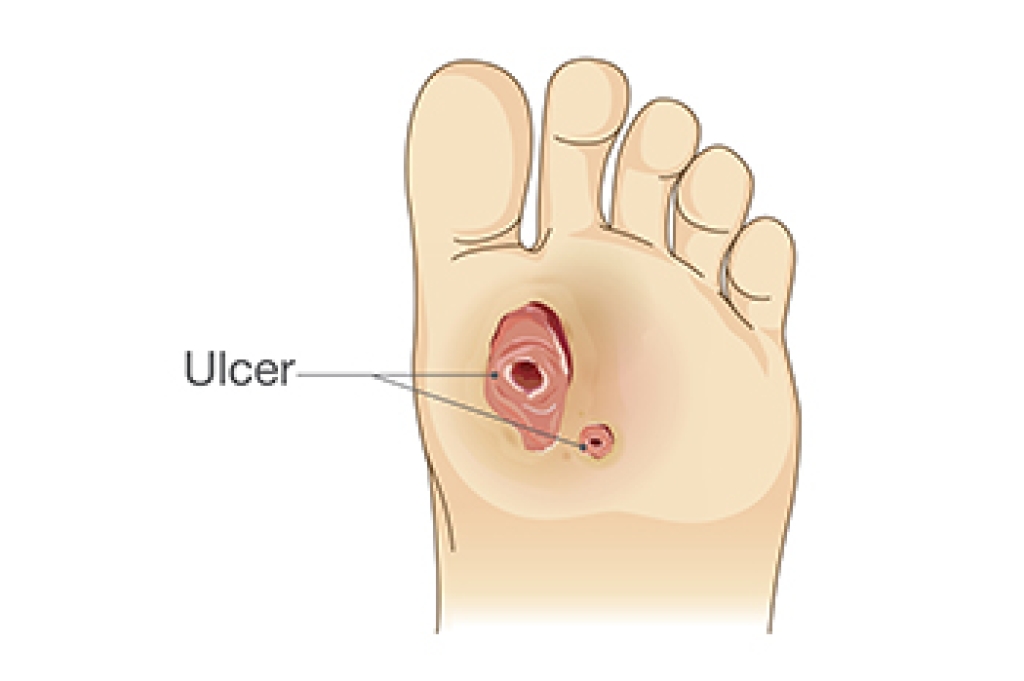
Diabetic foot ulcers are a serious and common complication of diabetes, affecting a significant number of individuals worldwide. These ulcers, often found on the feet, result from a combination of factors unique to diabetes. The term diabetic foot ulcer refers to an open sore or wound that typically develops on the lower extremities of individuals with diabetes. These ulcers tend to heal slowly, posing a considerable threat to the patient's overall health. The primary cause of diabetic foot ulcers is nerve damage, a condition known as diabetic neuropathy. Reduced sensation in the feet can make it challenging for individuals to detect injuries or pressure points, leading to undetected trauma. Poor circulation, another diabetes-related problem, further hinders the body's ability to heal wounds. Additionally, high blood sugar levels impair the immune system's ability to combat infection, increasing the risk of ulceration. In summary, diabetic foot ulcers are the result of a complex interplay of factors related to diabetes, primarily neuropathy, poor circulation, and compromised immunity. It is strongly suggested for individuals with diabetes to be under the care of a chiropodist. This medical professional will take proactive measures to prevent and manage these ulcers, which can possibly avoid severe complications.
Diabetes can cause serious problems in the lower limbs if proper preventive measures are not taken and diabetic wound care is not performed. If you would like to learn more about caring for diabetic feet, please consult with one of our chiropodists from West Toronto Foot & Ankle Clinic Inc. . Our chiropodist can help you maintain the health of your lower limbs and your mobility.
Diabetes can lead to a host of foot and ankle complications, including:
- Poor circulation
- Peripheral neuropathy
- Diabetic foot wounds and ulcers
- Infection
- Corns and calluses
- Dry, cracked skin
- Nail disorders
- Hammertoes
- Bunions
- Charcot foot
If you have diabetes, you must be vigilant of any changes in your foot health. This is best done through daily foot inspections. Using a mirror to help you if necessary, look for any:
- Cuts, scrapes, sores, or wounds
- Bruising or discoloration
- Swelling
- Rash
- Foul odor
- Nail changes
- Hair loss
- Warmth and inflammation
- Deformities
- Lower limb pain
- Strange sensations (numbness, tingling, burning, pins, and needles)
If you have any questions please feel free to contact our office located in Toronto, ON .
